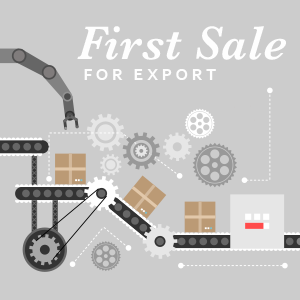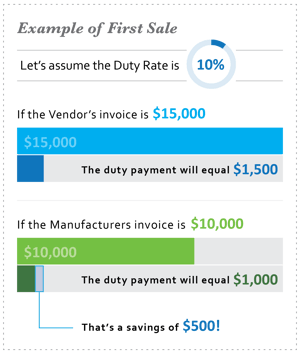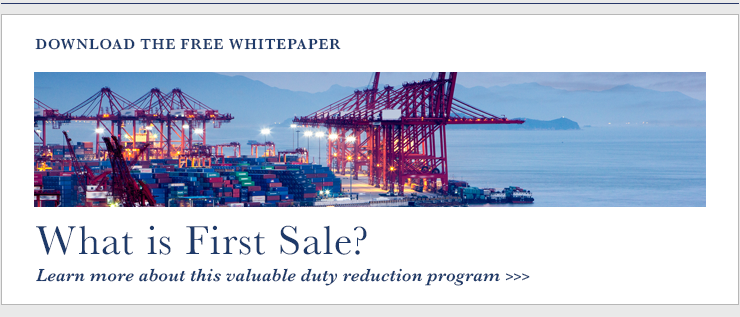 First Sale for Export is a duty mitigation program that is designed to reduce the dutiable value of eligible products imported into the United States. Usually, an importer would pay a higher duty amount based on the value of goods purchased from what is known as the ‘second sale’. This is the transaction between the importer and the middleman (vendor) which usually includes the middleman’s markup. Through the First Sale for Export program, importers are able to declare value on the goods purchased on the ‘first sale’, or the transaction between the middleman and the factory. In declaring First Sale valuation, an importer is able to cut out the middleman markup and to minimize the amount of duty paid when importing goods into the United States.
First Sale for Export is a duty mitigation program that is designed to reduce the dutiable value of eligible products imported into the United States. Usually, an importer would pay a higher duty amount based on the value of goods purchased from what is known as the ‘second sale’. This is the transaction between the importer and the middleman (vendor) which usually includes the middleman’s markup. Through the First Sale for Export program, importers are able to declare value on the goods purchased on the ‘first sale’, or the transaction between the middleman and the factory. In declaring First Sale valuation, an importer is able to cut out the middleman markup and to minimize the amount of duty paid when importing goods into the United States.
This duty savings program is especially popular among the textile and apparel industries where commodities have excessive middle man markups and duty rates as high as 32%. With a large potential to save on duty, it logically follows that this industry makes up the majority of the goods declared under the First Sale program.
But what about the other non-apparel commodities such as knives, golf clubs, or home appliances? With such a coveted program for duty recovery, why aren’t more importers taking advantage of this duty savings program?
For starters, many importers aren’t even aware that they are a candidate for the First Sale for Export program. Generally, any Importer bringing goods into the United States using a ‘multi-tiered’ transaction model may be eligible for the First Sale. However, ideal circumstances include:
- Medium to High Duty Rates
- Medium to High Middleman Markup
- High FOB volumes
- Cooperative Relationship between the Middleman and the Importer
 This is not to say that you must have all of these scenarios to be eligible for First Sale. An importer may find savings opportunities with any one or a combination of these circumstances.
This is not to say that you must have all of these scenarios to be eligible for First Sale. An importer may find savings opportunities with any one or a combination of these circumstances.
Tradewin’s approach has helped non-apparel importers become successful in duty minimization through the First Sale for Export program. One case in particular, is for a Japanese importer who specializes in artisan kitchen knives. Through the First Sale for Export program, Tradewin has helped this importer recover and save thousands of dollars every month through At-Time-of-Entry, Protest, and Post-Entry Amendment filings. These types of Japanese kitchen knives represent $283 million dollars in imports during 2013, according to the International Trade Commission, which is just a small portion of the total value of kitchen knives imported every year. With an average duty rate at 5%, the kitchen knife industry is just the tip of the iceberg when it comes to potential duty savings.
Tradewin has shown that the First Sale for Export program can be successful for non-apparel commodities. Our integrated methodology lead by Tradewin’s valuation experts is designed to assure the proper application of this duty mitigation method that can otherwise be difficult to navigate.
How can Tradewin help you save? Download our whitepaper.




